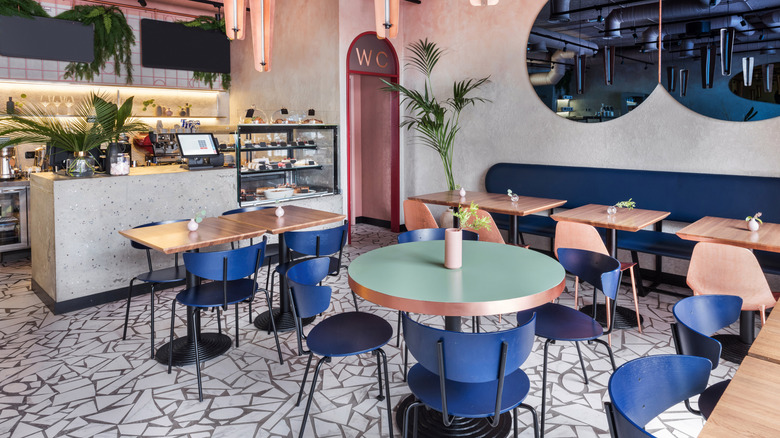The Restaurant Red Flag We'll Never Ignore Every Time We Dine Out
Planning to go out for a meal confronts you with two options — head to the tried and tested eatery that represents a safe option, or try out a new place. Or you may feel peckish when you're out and about and need a satisfying bite, while not knowing exactly what's good nearby. Unless you've been to the restaurant before or know from a reliable source that it is up to par, eating out can sometimes be a little hit-or-miss. Sure, there are some dishes, like tuna salad, that usually taste better at restaurants. But with all the eating options available, there's also a chance you could end up at a mediocre or downright disappointing restaurant that leaves you feeling unsatisfied with the experience.
Fortunately, there are certain red flags to watch for that will clue you in to whether a restaurant is any good even before you order. If you walk in during mealtime and find a restaurant almost or completely empty of diners, you may want to reconsider and start looking for another place to eat. Sure, there are low-traffic times for every restaurant, and it's certainly okay for an eatery to have just a few diners during those light hours. But being utterly empty at a time when most people are eating could mean that there is a specific reason this restaurant is being avoided. Sometimes it's better to not find out why first-hand.
The red flag of an empty restaurant can bode poorly
A full-fledged restaurant that's open for business yet empty could either mean that its food is particularly poor or that it is overcharging. A restaurant with low traffic might also have slower food rotation, meaning its food stock is taking longer to finish due to fewer orders. This could make it more likely you'll get less fresh or even stale dishes.
However, this doesn't mean a busy restaurant is a green flag every single time. It's important to observe the restaurant's location and its diners. Eateries in popular tourist spots could be bustling, but are more likely to offer mediocre fare at inflated prices. Instead, look for restaurants filled with locals or regulars who keep returning. A restaurant frequented by locals is also less likely to overcharge.
One of the few times it's conceivably okay for a restaurant to be empty is if it's an iconic eatery like the world's oldest restaurant or a Michelin star establishment. In that case, you may have just gotten very lucky to arrive on a less busy day. In a similar vein, some small-town family-run joints may also be empty, but if you find an enthusiastic owner or manager who seems genuinely passionate about their food, then you may still want to give the restaurant a chance.

